
Hrvatski Filmski Ljetopis
Scope & Guideline
Advancing Insights into Croatian Cinema.
Introduction
Aims and Scopes
- Cinematic Analysis and Critique:
The journal focuses on in-depth analysis and critique of films, exploring various artistic styles, narratives, and production contexts, particularly within Croatian cinema. - Intermedial and Cross-Cultural Studies:
It emphasizes intermedial storytelling, examining how different media forms interact and influence each other, alongside cross-cultural comparisons of cinematic works. - Cinematic History and Heritage:
The journal addresses historical perspectives on film, including the examination of Croatian film heritage, significant movements, and the evolution of film practices. - Film Theory and Philosophy:
Scholarly discussions on film theory, aesthetics, and philosophy are prominent, allowing for an exploration of the conceptual underpinnings of cinematic experiences. - Social and Political Commentary:
The journal often investigates the social and political dimensions of film, analyzing how films reflect and critique societal issues, ideologies, and cultural narratives. - Education and Pedagogy:
There is a focus on film education and pedagogical approaches to film studies, promoting the importance of cinematic literacy across different levels of education.
Trending and Emerging
- Cinematic Representation of Social Issues:
There is a growing emphasis on how films address pressing social issues, such as identity, migration, and human rights, reflecting a contemporary concern for social justice and representation. - Interdisciplinary Approaches:
The journal is increasingly incorporating interdisciplinary methods, blending film studies with psychology, sociology, and art theory to provide richer analyses of films and their contexts. - Impact of Digital Media on Cinema:
A significant focus on the effects of digital media and technology on filmmaking practices and audience engagement is emerging, exploring how digital platforms reshape cinematic experiences. - Women and Gender in Cinema:
Research concerning women's representation, gender dynamics, and feminist film theory is on the rise, highlighting the importance of gender studies within the cinematic discourse. - Film Festivals and Cultural Events:
There is an increased interest in the role of film festivals as cultural phenomena, examining their impact on film distribution, visibility, and the promotion of diverse voices in cinema.
Declining or Waning
- Traditional Genre Studies:
There seems to be a decline in the exploration of traditional genre studies, with fewer articles dedicated to analyzing specific genres or genre conventions in depth. - Technical Aspects of Filmmaking:
Discussions focusing on the technical aspects of filmmaking, such as cinematography, editing techniques, and sound design, are becoming less frequent, suggesting a shift towards thematic and narrative analysis. - Mainstream Hollywood Cinema:
The journal appears to be less engaged with mainstream Hollywood cinema, with fewer articles critiquing popular films or examining their cultural impact in comparison to independent or regional cinema. - Historical Film Criticism:
There is a noticeable reduction in historical film criticism, particularly regarding classic films, indicating a potential shift towards contemporary cinema and current film narratives. - Celebrity Studies:
Research focusing on celebrity culture and stardom in cinema is increasingly rare, perhaps reflecting a broader trend away from celebrity-driven analysis within film studies.
Similar Journals

Atalante-Revista de Estudios Cinematograficos
Exploring the Intersection of Cinema and Culture.Atalante-Revista de Estudios Cinematograficos, an esteemed open-access journal published by ASOC CINEFORUM L ATALANTE, has been a vital platform for scholarly discourse in the fields of Cultural Studies, History, and Visual Arts and Performing Arts since its inception in 2011. With a commitment to promoting innovative research and critical analyses, Atalante has earned a commendable reputation, achieving Q2 status in Cultural Studies and both Q1 rankings in History and Visual Arts for 2023. Based in Valencia, Spain, this journal not only serves as a conduit for scholars to disseminate findings but also provides unrestricted access to its contents since 2013, fostering a more informed and engaged academic community. With its diverse range of topics and the ability to access high-quality research at no cost, Atalante plays a crucial role in advancing the understanding of cinematic studies and its contextual significance in broader cultural narratives.

FILM CRITICISM
Bridging Theory and Critique in Film StudiesFILM CRITICISM is a prestigious open-access journal dedicated to the study and review of cinema, offering a platform for scholars, critics, and students to engage deeply with the evolving landscape of film. Published by Film Criticism and based in the United States at Allegheny College, this journal has been contributing to film studies since 2002, with recent issues spanning from 2023 to 2024. Registered under ISSN 0163-5069, it is recognized in the Visual Arts and Performing Arts categories, achieving a commendable rank of #372 out of 667 in Scopus, placing it in the 44th percentile of its field. With an open-access policy implemented since 2016, FILM CRITICISM not only broadens accessibility to scholarly work but also enhances the dialogue around cinematic narratives, theories, and critiques. The journal's relevance is underscored by its current Q3 ranking, making it an essential resource for researchers and professionals alike who are invested in the critical examination of film.
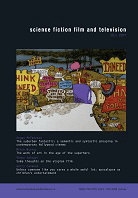
Science Fiction Film and Television
Charting New Worlds in Film and Television ScholarshipScience Fiction Film and Television, published by LIVERPOOL UNIV PRESS, is a leading academic journal that explores the rich intersection of science fiction with cinematic and television narratives. With an ISSN of 1754-3770 and E-ISSN 1754-3789, this journal provides a platform for critically engaging with both historical and contemporary works within the genre, offering insights into its cultural significance, aesthetic innovations, and societal impacts. As part of the communication and visual arts fields, it is recognized in the Scopus ranking, achieving an impressive percentile of 87th in Visual Arts and Performing Arts, and maintaining a respectable rank within communication studies. Since its inception in 2018, it aims to foster dialogues among scholars, professionals, and students, making substantial contributions to the understanding of science fiction as a vital cultural phenomenon. With access options that cater to a broad audience, Science Fiction Film and Television is essential reading for those interested in exploring the innovative potentials and narratives of science fiction across media.
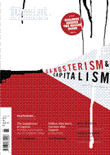
Film International
Diving Deep into the World of Film and Its Narratives.Film International is a prominent journal dedicated to the exploration of film and its cultural, social, and artistic significance. Published by INTELLECT LTD, this journal serves as a platform for interdisciplinary studies in the field of film criticism, theory, and scholarship, contributing valuable insights from both established and emerging researchers. With an ISSN of 1651-6826 and an E-ISSN of 2040-3801, the journal is an essential resource for those engaged in the realms of communication, cultural studies, and visual arts, though it is currently classified in the lower quartiles of these fields (Q4). Noteworthy for its critical perspectives and diverse content, Film International enhances the dialogue surrounding cinematic practices and their impact on society. Researchers, professionals, and students can explore its rich assemblage of articles and reviews that reflect the evolving landscape of film studies, making it a significant addition to the academic community focused on the art of film.
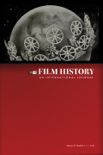
Film History
Navigating the evolution of cinema through a historical lens.Film History, published by Indiana University Press, is a premier academic journal that delves into the evolving landscape of cinema, illuminating the intricate interplay between historical narratives and film culture. With ISSN 0892-2160, and E-ISSN 1553-3905, this journal has established itself as a crucial resource for researchers, professionals, and students in the fields of history and visual arts. Recognized in the Q2 category for both History and Visual Arts and Performing Arts as of 2023, it boasts impressive Scopus rankings, securing #152 out of 667 in Visual Arts and Performing Arts, and #524 out of 1760 in History, placing it in the top 30th percentile. Although it does not currently offer open access options, the journal provides a wealth of scholarly articles that critically engage with film as a historical text, fostering a deeper understanding of its role in shaping societal narratives. Since its inception in 1987, Film History has been at the forefront of academic discourse, making it an invaluable resource for those seeking to explore the rich tapestry of cinematic history.

SIGHT AND SOUND
Advancing Film Studies with Insightful AnalysisSIGHT AND SOUND is a prestigious journal published by the British Film Institute, dedicated to the exploration of cinema and its cultural significance. With an ISSN of 0037-4806 and an E-ISSN matching the same, this journal has been a critical platform for film studies since its inception, contributing valuable insights to the realms of visual arts and performing arts. Despite its discontinuation in the Scopus database post-2021, SIGHT AND SOUND commands respect within its field, currently holding a Q3 rank among Visual Arts and Performing Arts journals. Operating from 21 Stephen Street, London W1P 1PL, England, it serves as a vital resource for researchers, professionals, and students looking to deepen their understanding of film theory, critique, and history. While access to its articles is not open, the journal continues to influence the discourse in film studies, making it a significant asset in academic and professional circles.
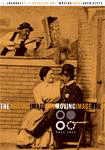
Moving Image
Illuminating the Intersection of Art and MotionMoving Image is a distinguished academic journal published by University of Minnesota Press, dedicated to the exploration and critical analysis of visual culture. With an ISSN of 1532-3978 and an E-ISSN of 1542-4235, this journal plays a vital role in advancing scholarship in the fields of Conservation, Visual Arts, and Performing Arts, offering insights from its notable publication history from 2013 to 2019 and again from 2021 to 2022. While it currently does not offer open access options, the journal is recognized as a crucial platform for disseminating research, reflected in its rankings—#442/667 in Visual Arts and Performing Arts and #87/103 in Conservation according to Scopus. Despite its placement in the Q4 quartile for both fields, Moving Image remains a key resource for scholars, students, and practitioners interested in the intricate dynamics of moving images in contemporary culture. Its commitment to fostering dialogue and innovation in visual studies ensures its relevance and influence within the academic community.

FILM QUARTERLY
Celebrating the Intersection of Art and AcademiaFilm Quarterly, published by University of California Press, stands as a leading academic journal in the field of visual arts and performing arts, boasting a prestigious Q1 ranking in the 2023 category quartiles. Since its inception in 1969, this quarterly publication has made significant contributions to the study and critique of cinema, attracting attention for its insightful articles, cutting-edge research, and comprehensive reviews that appeal to scholars, practitioners, and students alike. With an ISSN of 0015-1386 and an E-ISSN of 1533-8630, it serves as an essential resource for those seeking to enhance their understanding of film theory, history, and analysis. Although not open access, its articles are critical for researchers navigating the complex landscape of contemporary and historical film studies, underscoring its vital role in advancing scholarship within the discipline.
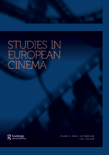
Studies in European Cinema
Enriching the Dialogue on European Cinematic PracticesStudies in European Cinema is an esteemed journal published by Routledge Journals, Taylor & Francis Ltd, focusing on the multifaceted realms of European cinema and its contextual relevance. With an ISSN of 1741-1548 and an E-ISSN of 2040-0594, this journal provides a dynamic platform for researchers and practitioners in the fields of Communication, Visual Arts, and Performing Arts. As reflected by its recent Scopus rankings, it holds a respectable position in the Arts and Humanities with an 84th percentile rank, indicating its significance and impact in the scholarly community. While not entirely open access, Studies in European Cinema seeks to foster critical discourse and analysis from 2004 to 2024, covering a broad spectrum of topics related to film studies, cultural representations, and the evolving narratives within European cinematic practices. Engaging with diverse theoretical frameworks, the journal aims to contribute to the vibrant dialogue surrounding European cinema, making it an essential resource for academics, filmmakers, and students alike who are passionate about exploring cinematic expression in a European context.

Cinemas d Amerique Latine
Exploring the Rich Tapestry of Latin American CinemaCinemas d Amerique Latine is a pivotal academic journal dedicated to the exploration and critical analysis of Latin American cinema. Published by PRESSES UNIV MIDI-PUM in France, this journal serves as an essential platform for scholars, practitioners, and students to engage with the diverse and dynamic landscape of visual storytelling throughout Latin America. With a dedicated focus on the cultural, historical, and aesthetic dimensions of film in this region, Cinemas d Amerique Latine aims to foster a deeper understanding of the cinematic narratives that shape and reflect Latin American societies. The journal has garnered a respectable Q3 ranking in the Visual Arts and Performing Arts category according to the latest 2023 evaluations, signifying its growing impact and relevance in the field. Despite its current lack of open access options, contributors can expect a rigorous peer-review process, ensuring the publication of high-quality research. Researchers exploring the rich tapestry of Latin American cinema will find Cinemas d Amerique Latine to be an invaluable resource in advancing their studies and contributing to vital scholarly conversations.